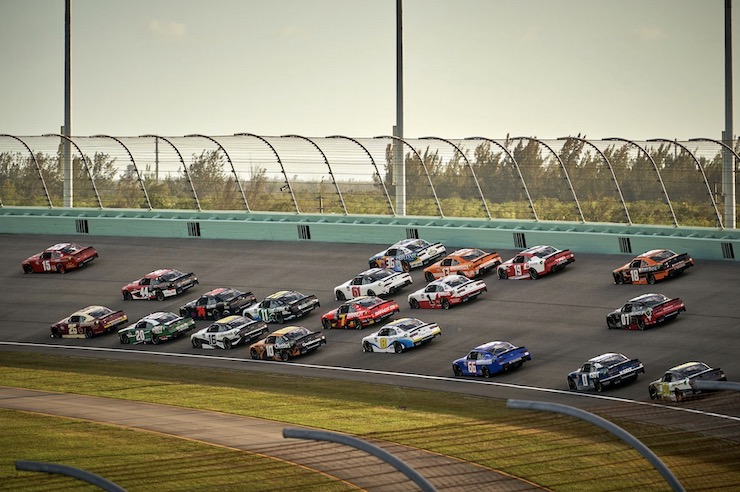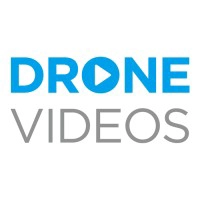
When NASCAR first discovered the world of drones two years ago, its avid embrace soon transformed the world of aerial race car photography. Today, FPV racing drones closely track the progress of cars around the track, flying at speeds of 85-95 mph, providing viewers with dazzling close-ups of drivers and their vehicles engaged in fierce lane-changing competition.
Now, NASCAR wants to use a specially configured DJI Inspire 2 drone to ensure that these same drivers avoid collisions and stay in their lanes, in accordance with NASCAR racing rules.
Under current rules, NASCAR drivers must choose whether to “go high” or “go low after completing their first lap around the track. On paved race tracks, a large V with an orange or yellow box is painted on the road surface just beyond the starting line to prompt drivers to choose one lane or the other. On dirt tracks, where painting a symbol isn’t feasible, many race tracks use a large plastic cone that is pulled on and off the track with a rope.
It serves the same purpose, either way, to spread out the pack, at the outset of the race. Drivers that run over the painted V or the cone are penalized, usually by being placed at the back of the pack. Although failure to observe the choose lane rule can be costly, drivers often complain about the system, which can penalize drivers who may lose sight of the box or cone, through no fault of their own..
Last month, NASCAR decided to experiment with a specially-equipped DJI Inspire 2 drone to make observance of the “choose lane” marker easier to follow. The first experiment occurred at the Bristol Motor Speedway, site of both the Craftsman Truck Series and Cup Series. How does it work? The DJI drone hovers over the track’s front-stretch, with a large orange box-like structure – lit up with LED lights – dangling below. Unlike the paved symbol or the cone, it’s impossible for a driver, regardless of his position, to miss.
NASCAR officials say use of the drone-lit box is just an experiment at this point. They’ve even relaxed the usual penalties on offending drivers until they become more accustomed to using the new technology.
Reaction thus far from NASCAR drivers is cautiously optimistic. Some drivers found the whole idea “gimmicky,” but said they would wait to see how it worked out in practice before reaching a final judgment. Most drivers, though, welcomed the innovation, especially as a replacement for cones, which required race track employees to venture onto the track in the midst of a race, exposing them to potential danger. They also noted that a drone box would be far more visible than either a cone or painted symbol, especially at night, and would reduce driver violations and penalties.
“Those orange boxes on the ground are hard to see when you’re approaching them if you’re not the lead car,” NASCAR driver Aric Almirola said. “The further you get back in the field, guys are making the decision at the last minute so it is kind of hard to see where it’s at.”
Another driver summed up the thinking of his colleagues with a single word: “Cool!”
Fox News, which regularly broadcasts NASCAR races, says it plans to keep one of its cameras trained on the DJI drone at all times during future events at Bristol. And NASCAR officials say they’re waiting to see how the new drone performs – and gauging public sentiment – before expanding its use to other motorways.
